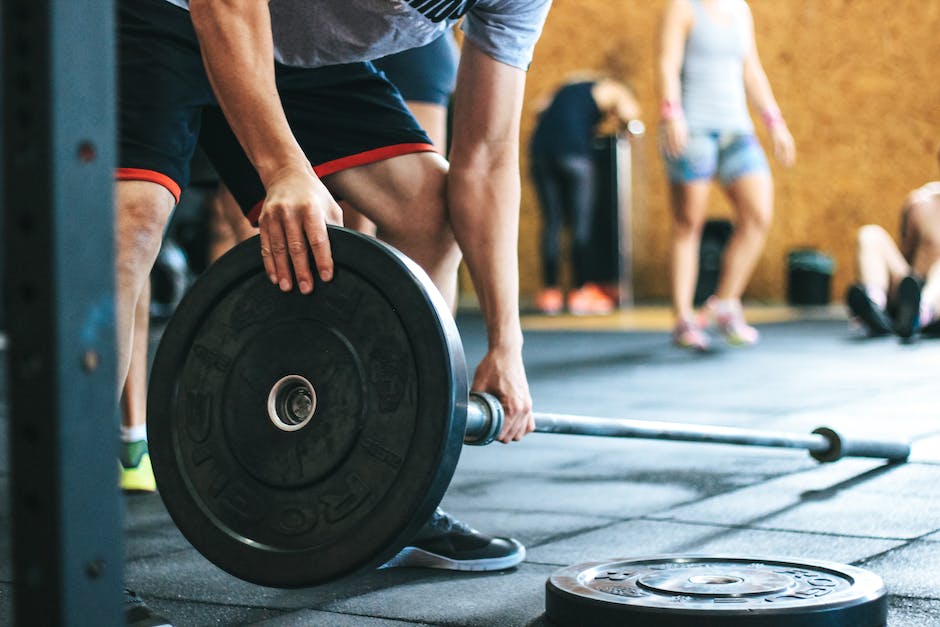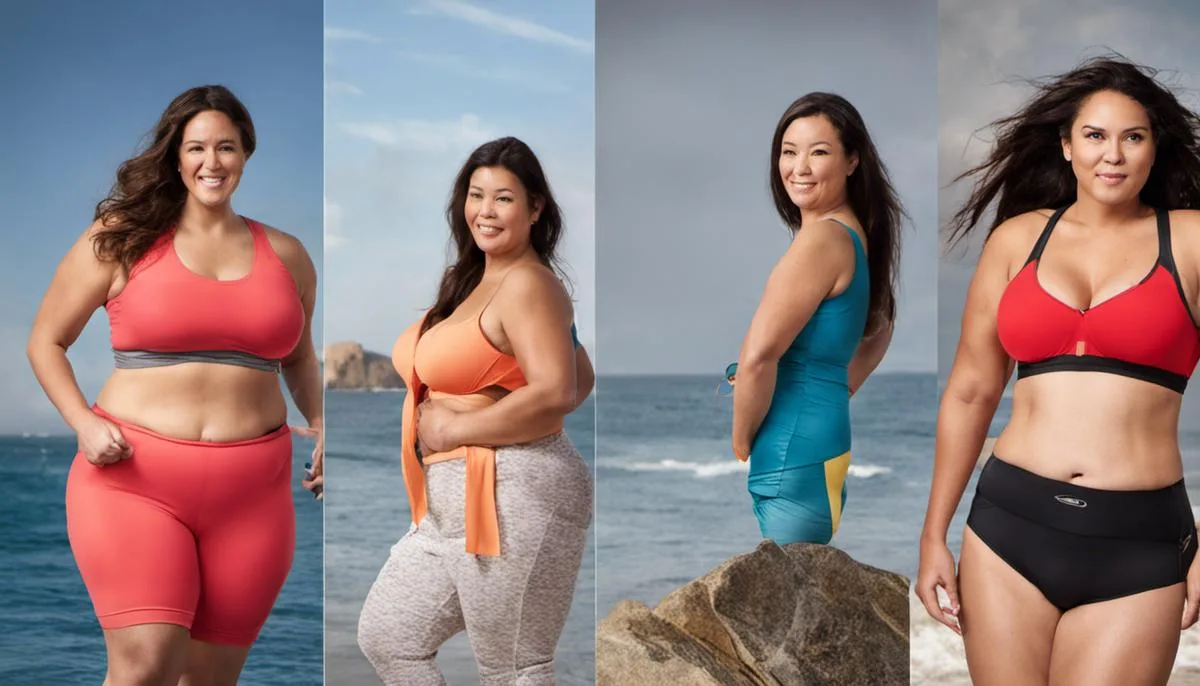Embarking on a weight loss journey can seem daunting at first especially when you have to contend with numerous workout plans, dietary guides and a sea of differing opinions. However, every woman’s journey to weight loss is individual and unique, largely dependent on her body type, metabolic rate and reaction to various exercises. Hence, gaining an understanding of these factors can be instrumental in creating an effective gym routine for weight loss. Moreover, and no less important, are the elements of cardio workouts, strength training and nutrition which serve as pivotal components in achieving success in this endeavor. The following insights aim to shed some light on these intricate details, guiding you toward a more enlightened path on your fitness journey.
Understanding Body Types and Weight Loss
Understanding Your Body Type for Weight Loss
There are three major body types, each of which has different metabolic rates and response to exercises. By understanding your body type, you can tailor your workouts to suit your body’s natural tendencies and boost your weight loss efforts.
Endomorph Body Type
Endomorphs have larger bone structures and tend to store fat easily. They have a slower metabolism, which can make weight loss more challenging. An effective gym routine for endomorphs should focus on total body workouts that increase metabolic rate and improve insulin sensitivity. This could include activities such as running, swimming, or cycling that provide aerobic exercise and get your heart rate up. Strength training focusing on large muscle groups can also be beneficial. Endomorphs should aim for constant and consistent workouts rather than short, intense bouts of exercise.
Mesomorph Body Type
Mesomorphs have naturally athletic bodies. They tend to have a higher metabolism rate and distribute fat equitably throughout their bodies. For this body type, weight loss exercises should aim at maintaining their metabolism rate and muscle tone. They benefit from a mix of strength training and cardio. However, over-exercising might lead to quick muscle gain, which could affect their weight. Thus, mesomorphs should aim for moderation in physical activities and workouts.
Ectomorph Body Type
Ectomorphs are naturally thin with smaller bone structures and fast metabolisms, which makes it harder for them to gain weight. They benefit from shorter, high-intensity workouts to avoid excessive calorie burn that can lead to unintended weight loss. Strength training, especially resistance and weight training, can be beneficial for ectomorphs as it helps build muscle mass and improve overall body strength.
Understanding your body type and designing workouts strategically can greatly enhance your gym routine and facilitate weight loss. It’s important to remember that everyone is unique, so what works for one person might not work for another. Therefore, experimenting a bit with different types of exercises and observing how your body responds can be extremely helpful. Listen to your body, respect its limits, and adjust accordingly on your weight loss journey.

Cardiovascular Workouts
Cardiovascular Workouts for Weight Loss
Engaging in cardiovascular workouts is an effective way to burn off extra calories and achieve your weight loss goals. These exercises not only help in weight loss, but they also strengthen your cardiovascular system, boost your mood, improve sleep and reduce your risk for certain diseases.
Running Workouts
Running is one of the most accessible and efficient ways to get a cardiovascular workout. To use running for weight loss, you could start with a simple technique, which involves running at a moderate pace for about 20-30 minutes at least three times a week. As you build stamina, increase the intensity and duration of your runs. Interval training, which involves short bursts of high-intensity runs separated by slower recovery periods can also be very beneficial for weight loss. One example of an interval running workout is to run at a very fast pace for one minute followed by two minutes of slow jogging or walking, repeating this throughout the duration of your workout.
Biking Workouts
Biking, whether stationary or outdoor, is another great cardiovascular workout that’s effective for weight loss. Start with a moderate-intensity workout, keeping a steady pace for about 30 minutes at a time. As your fitness improves, increase the intensity and length of your workouts. High-intensity interval training (HIIT) on a bike, which involves short, intense bursts of pedaling followed by lighter, slower periods, can also work well for weight loss.
Elliptical Machine Workouts
Using an elliptical machine is an excellent way to get a low-impact cardio workout. These machines can provide a great workout for beginners as well as more advanced exercisers. To utilize an elliptical for weight loss, aim for at least 30 minutes of moderate intensity workouts, at least three times a week initially. Increase the time and intensity as your fitness improves. Interval training can also be effective on an elliptical machine.
In conclusion, for cardiovascular workouts to be effective in weight loss, they need to be done regularly and consistently. Progressively increase the intensity and duration of your workouts as your fitness improves. Combining these workouts with a healthy diet will further accelerate your weight loss. Remember, always consult with a healthcare provider before beginning any new exercise regimen.
Benefits and Cautions
While cardio workouts are highly beneficial, precautions should be taken not to overexert yourself. Start with moderate-intensity workouts and gradually increase as your body accommodates. Also, it’s been advised to mix and match different workouts to engage different muscle groups and prevent your body from hitting a ‘plateau’.
Lastly, picking an activity that you enjoy will make it more likely for you to stick with your workout regimen. Whether it’s running, biking, or an elliptical workout, sticking to the routine is critical for achieving your weight loss goals.

Photo by delaneyvan on Unsplash
Strength Training for Weight Loss
Basic Principles of Strength Training
For starters, understanding the basic principles of strength training is essential to achieving weight loss goals. Begin with timing: consistency is vital in strength training to continue burning calories even after the workout. Then, balance is the key. Don’t just focus on one area of the body. For comprehensive weight loss, strength training should engage all major muscle groups. Lastly, always remember to incorporate rest and recovery days into your workout regimen. This allows your muscles time to recover, grow stronger, and burn more calories.
Beginner Strength Training Exercises
As a beginner starting your weight loss journey through strength training in the gym, focus on basic exercises that engage multiple muscle groups. The chest press, leg press, seated row, and bodyweight squats are some essential exercises to get started. A general rule is to aim for two to three sets of each exercise, with 10 to 12 repetitions (reps) per set.
Advanced Strength Training Exercises
Once you’re comfortable with the beginner exercises, you can move onto more advanced moves. These may include deadlifts, bench press, kettlebell swings, and overhead presses. To get the greatest weight loss benefits, increase the weight you lift progressively, but remember to always maintain proper form to prevent injuries. You might aim for three sets of 6 to 8 reps for each exercise.
Adding Cardio to Your Strength Training
Cardio workouts alongside strength training can further aid in weight loss. It’s recommended to aim for at least 150 minutes of moderate aerobic activity or 75 minutes of vigorous activity each week. This cardiovascular exercise can be spread throughout the week, and can include activities like running, cycling, rowing, or using the elliptical machine.
Circuit Training for Effective Calorie Burn
Circuit training, a combination of strength and cardio exercises, is an excellent tool for weight loss. It involves doing a series of exercises, or “circuits,” with little to no rest in between. This keeps your heart rate up, burning more calories and increasing your cardiovascular fitness. Sample circuit could include: body weight squats, kettlebell swings, jumping jacks, push-ups, and cycling on a stationary bike.
Post-Workout Nutrition for Weight Loss
Remember, your diet also plays a crucial role in weight loss. Post-workout, it’s essential to refuel your body with the right balance of proteins, carbohydrates, and fats to aid in recovery and muscle growth. Eating well-balanced meals along with strength training will ultimately help your overall weight loss goals.
Monitoring Your Progress
Finally, it’s essential to track your progress as it motivates and confirms if you’re on the right path. By keeping a record of your weights, reps, and sets, along with your dietary intake, you can continually assess and tweak your strength training program to get the best results for weight loss.

Nutrition and Diet
Understanding Nutrition for Weight Loss
Understanding the principles of healthy eating is vital for weight loss. It is essential to consider the quality and quantity of the food you eat in relation to your physical activity. A well-balanced diet provides the energy required to perform your workouts and supports recovery post-workout. It consists of lean proteins, whole grains, fruits, vegetables, and healthy fats. It’s crucial to keep yourself hydrated, too. Drink water before, during and after your workout to replace fluids lost through sweat.
Relationship Between Nutrition and Exercise
Regular exercise and diet go hand in hand when you’re trying to lose weight. Exercise burns calories, but if you’re not fueling your body right, it can be difficult to shed those pounds. A balanced diet can boost your energy levels and help you exercise longer and harder. Conversely, exercise can help control your appetite and make you feel more in tune with your body, leading you to naturally choose healthier foods.
Plan Your Meals
Pre-planning your meals is a great way to stay on track. Ideally, aim for three meals and one to two snacks per day. Choose options low in saturated fats, salt, and sugar. Include a variety of nutrient-rich foods from all the food groups. A hint is to make your plate colorful – the more colors, the wider variety of nutrients. It’s also helpful to gauge portion sizes to avoid overeating.
Timing Your Meals
Avoid skipping meals. Regular meals and snacks can prevent you from getting too hungry and overeating. Also, watch the timing of your meals in relation to your workouts. Eat a small snack or meal about 1 to 3 hours before your workout so you have enough energy. You might experiment to see what works best for you. Good snack options before a workout might include a banana with nut butter, low-fat yogurt with fruit, or a smoothie.
Balanced Diet After Workout
What you eat after your workout also matters. After a gym session, your body needs to replenish the glycogen it has lost during your workout. A combination of protein and carbohydrates within an hour after your workout can help speed this process. Opt for foods like grilled chicken with roasted veggies, a protein shake with banana, or a whole grain wrap with lean meat.
Understanding Portion Sizes
It’s not just what you eat, but how much you eat. Even healthy foods can lead to weight gain if eaten in extreme quantities. Learn to understand portion sizes. One serving of protein should be about the size of the palm of your hand, or a deck of cards; one serving of carbs should fit in your cupped hand; and fats like oils and nuts should fit in your thumb.
Reliable Nutritional Information
Finally, arm yourself with reliable nutritional information. Familiarize yourself with the nutritional facts on labels, and consider consulting a registered dietitian or nutritionist for personalized advice.
Remember, healthy weight loss is a journey, and changes won’t happen overnight. Make small modifications to your diet and exercise habits, and over time these will become a part of your everyday life. These changes combined with regular gym workouts can help you meet your weight loss goals.

A successful weight loss journey is always characterized by the perfect blend of effective workouts and lifestyle choices complemented by proper nutrition. Women should not shy away from strength training as it holds significant benefits for weight loss which can be explored on various levels from beginner to advanced. Cardiovascular exercises also hold substantial importance, and their understanding is equally crucial. Not forgetting, nutrition plays a silent yet powerful role in your weight loss endeavor making your gym effort worthwhile. Armed with this knowledge, you are ready to face your weight loss journey with a renewed sense of determination. Embrace these strategies, and you will be well on your way to achieving your fitness goals and living a healthier, fitter life.
Thank you for reading this post, don't forget to subscribe to our free newsletter
!
